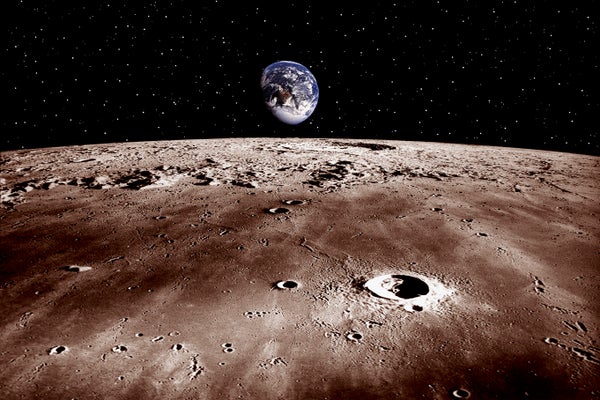The Apollo missions brought back 842 pounds of rock and soil from the moon… nearly 2200 different samples. But there's one sample that planetary scientist Meenakshi Wadhwa says is the most interesting of all: "Apollo 1-0-0-8-5."
Neil Armstrong collected it on Apollo 11.
"He was about to step back into the lunar module and he turned around and had this rock box and saw little spaces in there and he knew that these geologists on earth would be just so excited to study these materials, he just scooped up I think nine scoops of soil that he put into the box and brought it back."
On supporting science journalism
If you're enjoying this article, consider supporting our award-winning journalism by subscribing. By purchasing a subscription you are helping to ensure the future of impactful stories about the discoveries and ideas shaping our world today.
It became one of the most well studied samples of the Apollo missions, she says. And a geologist named John Wood, at the Smithsonian, noticed white flecks of rock in the soil… which he identified as a rock type called anorthosite. And it clued him in to the moon's ancient past.
"And this was quite a leap of imagination but he proposed that the whole of the moon had at one time in the past, close to 4.5 billion years ago, been almost covered with a global magma ocean. An ocean of lava. This was a revolutionary idea at the time. Because people had thought the moon had formed cold, so it completely changed our idea how the moon formed, how the terrestrial planets formed, like the Earth as well. So it really changed a lot about our understanding of planetary science."
But Wadhwa has a second—and more personal—reason to appreciate this sample.
"I met my husband because of this rock. My husband is Scott Parazynski, he was with NASA as an astronaut for 17 years, from 1992 to 2009. After his retirement from NASA, he was a mountaineer as well. And he had always aspired to climb Mount Everest."
Scott's boyhood heroes were Neil Armstrong, and the climber Edmund Hillary, who made the first confirmed ascent of Everest with his partner Tenzing Norgay.
"In honor of them, he wanted to take a moon rock from Apollo 11 to the top of Mount Everest, and to bring back an Everest summit rock."
Wadhwa was, at the time, the chair of the NASA committee that grants access to the samples for scientific purposes. This request, she says, was definitely out of the ordinary.
"I just remember it because it was a really funny discussion in the committee room, you know, hey, what if that moon rock falls down a crevasse, you know, and Scott would be going down with that moon rock of course!"
But Scott made it to the top. Wadhwa never met him, and moved on from the lunar sample committee. But then, a year or two later, she saw a friend suggestion pop up on Facebook: you might know Scott Parazynski.
"And I reached out to him and I said, 'hey, how did that expedition go and did you return the moon rock to NASA?' And he said 'No, I didn't send the moon rock back to NASA. I actually sent it back to the International Space Station with a summit rock. And if you ever happen to be in Houston I'd love to meet you and thank you for making that possible.' I happened to meet him some months later… and that was it."
And so Neil Armstrong's last-minute scoop of moon dust brought two people together here on Earth… and upturned our understanding of how the moon—and the Earth itself—got here.
Christopher: There's something in there, 'One small scoop for a man…'
Meenakshi: "Yeah! A magma ocean for all mankind."
—Christopher Intagliata
[The above text is a transcript of this podcast.]

